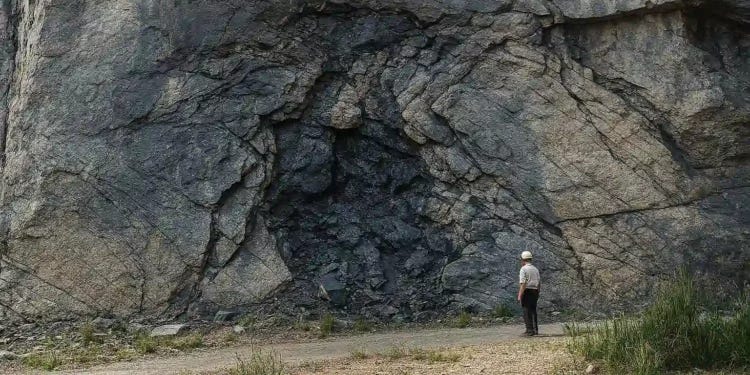If you find this article interesting, click the like button for me! I would greatly appreciate it :)
There are a lot of old things that don’t make sense or shouldn’t be there. The Great Pyramids in Egypt, Stonehenge, Göbekli Tepe, Piri Reis map, and so many more are unexplainable or just rationalized away. While these artifacts are thousands of years old, one strange discovery stands alone, being much, much older.
In June 1972, French scientists at their nuclear enrichment facility were analyzing a shipment of ore from West Africa. The fissile U-235 in this ore was 17% below the natural levels. Puzzled, the scientists realized this was extremely problematic, given stringent laws on uranium enrichment or, at the very least, the economic implications of receiving depleted ore. After further analysis of the ore, alternate isotopes of neodymium, ruthenium, and Xenon were found, implying fission had taken place. This was impossible, not to mention the ore was 1.7 billion years old.
Life on Earth at the time consisted of sea-bound algae and only the first eukaryotes. This left the only options: aliens or the first and only naturally occurring fission reaction ever found. Rising oxygen levels on the planet could have led to increased movement of water in the crust, which reacted with higher than normal uranium levels by today’s standards. This perfect mix of conditions is what likely led to this initially unexplainable reaction in Oklo, Gabon, 1.7 billion years ago.
If that just triggered something in your brain, you’re correct. The Oklo fission story was the influence for naming the exciting new company, Oklo Inc. This company is significant as one of the exciting new advanced nuclear reactor companies led public by a Sam Altman SPAC. Up 145% year to date, what does Oklo do, and is it time for excitement in the small module reactor space?
Technology
Oklo reactors are in the small modular (SMR) reactor category. While companies like NuScale are scaling down the conventional light water reactors (LWR), Oklo used a liquid-cooled fast reactor. This means sodium metal or alloy is used as a coolant instead of water, allowing for reaction temperatures of 500-600°C instead of 300°C in a LWR. Higher temperatures allow for the use of heat energy in addition to electricity, like fossil fuels.
LWRs are usually 1000MW, whereas Oklo reactors are 15-100MW, which may allow for greater scalability and lower costs. The design allows for extended time before refueling at 10 years and better safety characteristics in the event of a meltdown. Oklo’s <100MW reactors are very small, meaning they are targeting remote, military, industrial, and data center applications. TerraPower has similar reactor technology, but is building larger SMRs for grid applications.

It isn’t all sunshine and rainbows as the stock price might suggest. While publicly traded, Oklo is still a startup/growth company that is not generating any revenue. They still do not have a combined license application (COLA) from the Nuclear Regulatory Commission (NRC). They were denied back in 2022, but have re-applied. NuScale is the only SMR company with an accepted COLA.
Regardless, Oklo does have one of the earliest expected operation timelines. Late 2027 or early 2028 is when they expect the first commercial reactor to be online, which means it is still years away from any tangible revenue. The company is currently well funded, so assuming the license is accepted, they must successfully scale up and manufacture their product.
The last concern is that these reactors use high-assay low-enriched uranium (HALEU), which is a different supply than for conventional LWRs. HALEU is currently being produced in Centrus Energy’s Piketon facility in Ohio, which is heavily funded by the Department of Energy. There are a few other domestic suppliers that expect to come online near the end of the decade.
Oklo has been working on making deals for its technology. Switch Inc., Equinix, Wyoming Hyperscale, and other data centers have made deals. Diamondback Energy is an oil company that has made a deal with Oklo. Finally, just last month, Oklo struck a deal with the DOD/Air Force to power a base in Alaska. Talk about Sam Altman’s company making future deals also looms after Altman stepped down from the Oklo board to avoid a conflict of interest.
The stock exploded this year behind a compelling AI-data center growth story, in addition to support from the Inflation Reduction Act (IRA) and a Trump executive order. The nearly $8 billion market cap is almost 10x its nearest public competitor, NuScale. Private companies like TerraPower, X-energy, and Kairos could easily be valued at $1-6 billion (estimate). The public markets have treated Oklo well, providing the highest valuation of any SMR company.
While I am optimistic about the nuclear sector, including these advanced reactor companies, caution is warranted with Oklo. It has seen a lot of optimism in the market, but faces its biggest challenges yet: NRC license, manufacturing, the path to profitability, and the multi-year runway before operation. Oklo is an exciting company. That same company’s stock is down 27% since the high in June, with room for another 30-60% decline, while still in a long-term bullish technical posture. Until next week,
-Grayson
Socials
Twitter/X - @graysonhoteling
LinkedIn - Grayson Hoteling
Archive - The Gray Area
Notes - The Gray Area
Promotions
Sign up for TradingView



